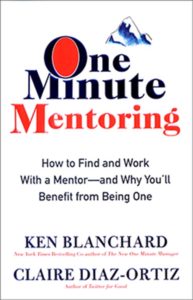How the Femtech Boom is Bringing Resilience Innovation to Market
Claire Diaz-Ortiz
When Amy Divaraniya was trying to get pregnant with her son, she did everything right. She ate all the foods, she took all the supplements, and she downloaded all the apps. But as a woman with irregular menstrual cycles, the fertility industry just wasn’t built to help her. “It’s all designed for the perfect woman,” she says with frustration.
That’s because the most popular fertility products these days – devices like the Ava Fertility Tracker, or tracking applications like Clue, Flo and Kindara – all have one thing in common: they target women with a 28-day cycle. Statistically, only 13% of women have one.[1] As Divaraniya found in her own experience, it was only in the fine print that they disclosed this reality. “They are marketing to the desperation.”
And for women with irregular cycles, desperation it is. Ten years ago, before I started the fertility treatments that would result in my three children, I talked to another founder fundraising for an ovulation tracking app. I was interested, but I didn’t have regular cycles. He said flat out, “We can’t help women like you.”
For a woman with irregular periods, there are two basic ways to get pregnant. 1. By chance. (Sometimes after years of trying.) 2. Invasive, expensive fertility treatments.
OOVA offers a third option: A method for women who have irregular cycles to empower themselves with the knowledge they need to take charge of their fertility. OOVA is a simple urine test you do from your home that tracks your hormones over time, meaning that it can detect fluctuations based on each woman’s personal baseline. The critical health information it gives a woman can help her decide what to do next.
Divaraniya’s son is only 11 months old, so she can still easily remember what it was like trying to conceive. She was doing everything. “If you tell me to eat this I will eat it if it makes me pregnant.” Nothing was working. She wondered, “So much innovation is happening in technology, why can’t we apply that to women’s health?”
Ultimately, Divaraniya invented the innovation she herself needed. With a PHD in biomedical science, she was completing a post-doctorate at Mt. Sinai when she pitched the idea to her cofounder, Jerome Scelza. They went on to raise a friends and family round to fund their first prototype. She describes it fondly as a “paper strip stuck inside a cassette.” After the raise she laughed, “That’s gonna go on our wall one day.” With their prototype in hand, she shared her personal story of infertility and resilience on social media. In less than four days she had 500 women requesting to be beta testers. Shortly thereafter Divaraniya and Scelza raised a $1 million seed round.
Shockingly, Divaraniya says that innovation in women’s reproductive health has barely budged since 1960. The pregnancy test is still the same large, unwieldy stick that sticks out awkwardly out of every garbage can. When you use it, “everyone will know you are trying.” When I ask why it’s taken over 50 years to see progress, she says that in the case of OOVA in particular the technology is new. “Smartphone cameras only recently became good enough to do this kind of at-home diagnostic. So you have the right utility for the right tech.”
That’s hardly the full story. When it comes to the overall wave of women’s health technology companies the answer is more complex. In 2016, Ida Tin, the entrepreneur who founded the fertility tracker, Clue, coined the phrase “femtech” to encompass the category, which includes reproductive health and fertility solutions, tracking apps, pregnancy and nursing care, and women’s sexual wellness.[2] Some market research firms expect the femtech industry to reach $50bn by 2025.[3]
So why now?
Since women have always made up half the population and there has always been a need for such innovation the answer doesn’t lie with the innovations themselves, but in the funding of such innovations. Specifically, the investment capital needed to turn a story of personal resilience into market-ready solution. Or, as I would say, to bring resilience innovation to market.
And that’s where venture capital comes in.
Kjartan Risk, venture capitalist at Concentric, argues that venture capital is the original impact investing. One reason, he says, is that by providing riskier types of funding venture capital creates greater market diversity and increases market resilience. “A constant supply of new startups helps industries to respond and adapt to both slow and sudden changes by ensuring there is no single point of failure, while also driving the development of new solutions.”[4]
As a female investor myself, I would argue that it’s absolutely critical to make sure that a diverse array of investors actually sit at that table. Currently, only an estimated 6% of decision makers at venture capital firms are women. And since investors are notorious for “pattern matching” when they invest, Femtech innovations are more likely to be left right on that table. As authors Jessie M. Gabriel and Tara Ravi argue, male investors have a hard time understanding the value proposition of such products.[5] Researcher Emily Gilmore pushes further, saying that they find themselves “too embarrassed to ask further questions around technology based on “taboo” subjects such as breastfeeding or periods.”
Kathy Gerlach, Founder and CEO of Ovally, knows this well. When she left her job as an Executive at AirBNB to start her Femtech company, she got more than a few funny looks. “Why would you do this?” People said when they heard she was building a company that makes fertility treatments more accessible and affordable for North American women by capitalizing on medical tourism in Spain. She had personally seen and the need for such a solution. But many of the men around her had no idea. She laughs that they probably thought, “Another woman with a period.”
But the femtech wave shows the change on the horizon.
Founders like Gerlach and Divaraniya are have seen or experienced setback, hardship, or failure, and have innovated around that. I call this resilience innovation. Now, with more emphasis on bringing women into investing, they are slowly getting the funding they need to bring their innovations to market. As women’s investing collective #angels encourages venture capitalists: “Investors: you control who gets capital and at what terms. Invest in women.”[6]
When Divaraniya pitched her company, she pitched up to 30% female venture capitalists, up from that 6% national average. And she found so many of them had personal experiences or resilience that drove their desire to invest in innovations in the space. “I was floored. They had personally gone through it.”
And personal experience, key to pattern matching, drives investment. Gerlach knows this well. Her company, Ovally, first started to gain traction when blog posts she wrote about her personal experience freezing her eggs in Spain became popular. She found, surprisingly, that many men were reading her blog. Some had gone through infertility and some had not. Either way, her posts were encouraging the process of “men gaining empathy” and laying the groundwork for pattern matching.
Ultimately, the Femtech wave can be attributed to the new
injection of investment into innovations developed out of personal tales of resilience.
Such stories have always existed. The ideas for resilient innovations have
likely always existed as well. What has changed is the investment money. If the
money is there, these innovations can come to market to start to change the
world. In Femtech, they already are.
[1] https://verilymag.com/2015/11/fertility-womens-health-menstrual-cycle-hormones-ovulation-charting
[2] https://en.wikipedia.org/wiki/Femtech
[3] https://www.theguardian.com/business/2019/jun/06/femtech-startups-womens-health-investors
[4] https://www.forbes.com/sites/kjartanrist/2018/11/30/why-venture-capital-is-the-original-impact-investing/#7fa0069b53f3
[5] https://www.lexology.com/library/detail.aspx?g=231d3a01-cd0c-4dd1-83cb-92b2f89bbe94
[6] https://twitter.com/HashtagAngels/status/1042066776744263683



